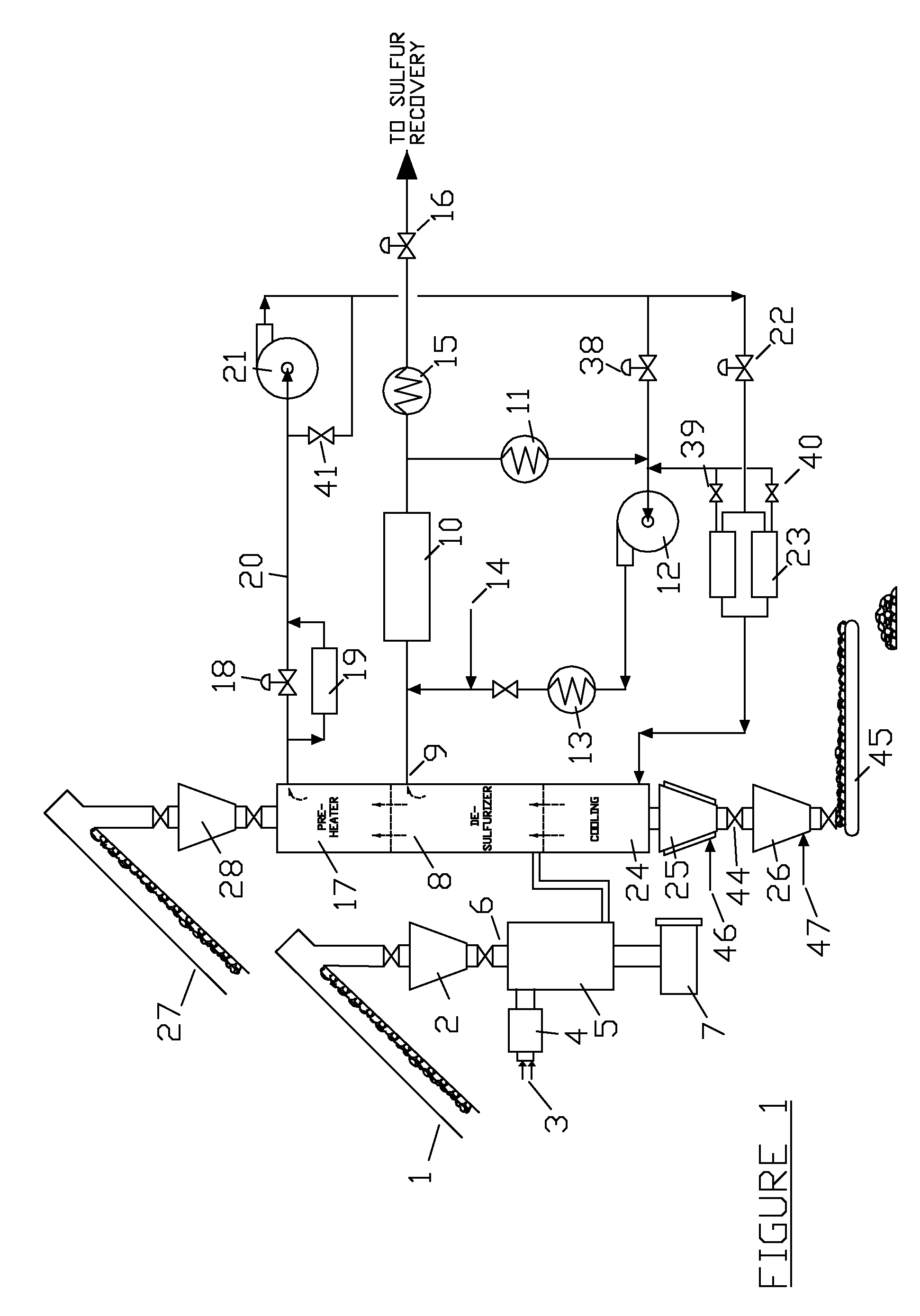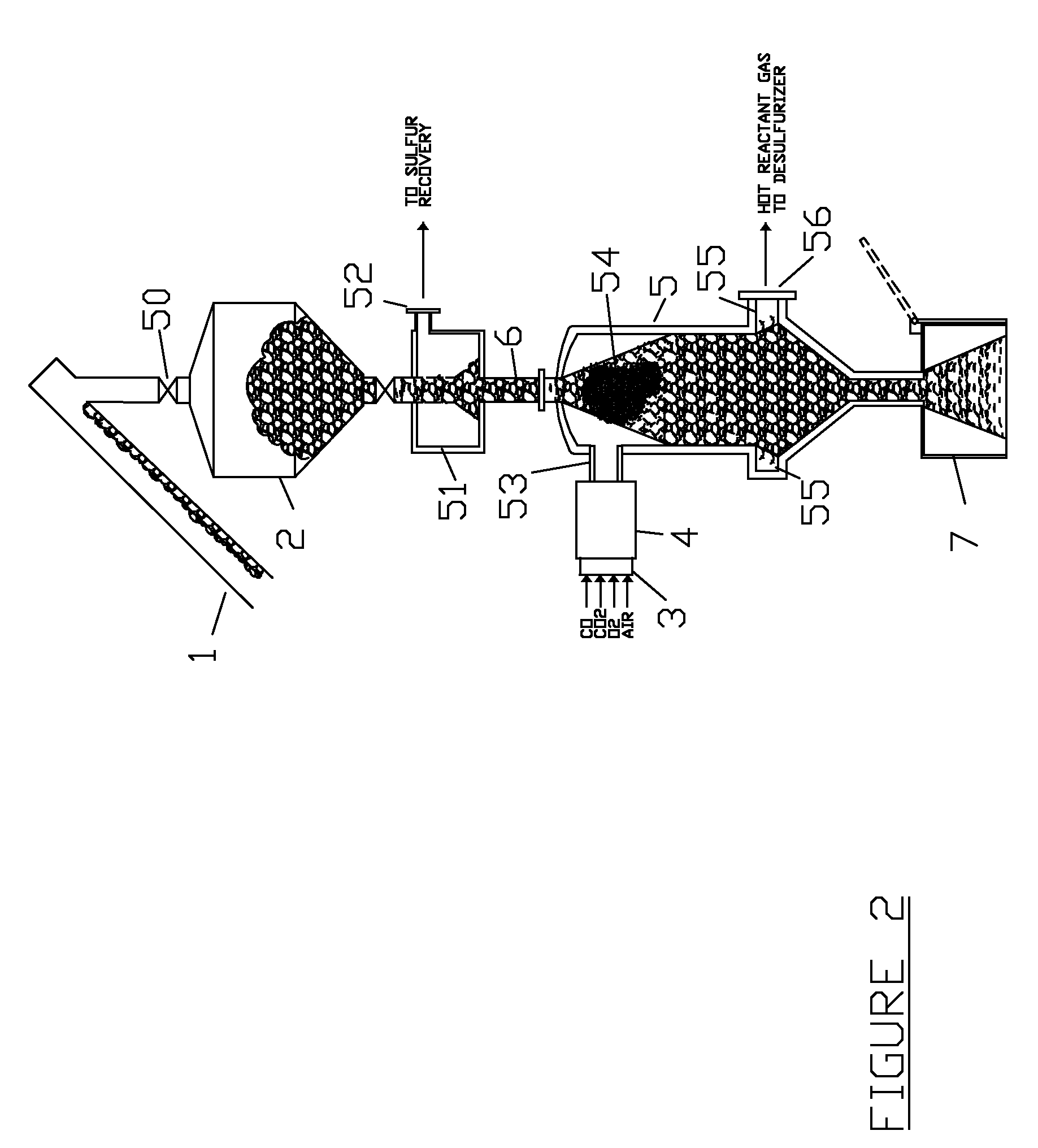CO Generator and Process for Desulfurizing Solid Carbon-based Fuels
- Summary
- Abstract
- Description
- Claims
- Application Information
AI Technical Summary
Benefits of technology
Problems solved by technology
Method used
Image
Examples
Example
DETAILED DESCRIPTION OF THE FIGURES
[0029]FIG. 1 shows a process schematic of the present invention. An elevator 1 containing a low-value, calcined fuel coke brings fuel to a hopper 2. Coke from the hopper 2 is supplied to the combustor 5 through a supply column 6. The fuel coke fills the Combustor 5 and debris bin at 7. A start-up burner 3 operates with CO gas and Oxygen. The mixed and ignited gases flow into oxidizer at 4. Hot gas from the Oxidizer passes into the combustor where the fuel coke is heated and ignited. All oxygen in the gases is consumed in the Combustor. Part of the hot combustor gas flows back up the supply column 6 at a controlled rate and is vented to a collection header that feeds a standard sulfur recovery process. The hot gases vented back to the supply column 6 pre-heat coke fuel entering the combustor to replace burned coke. Preheating the fuel coke assures that the combustion zone remains at the top of the Combustor 5. As coke flows into the Combustor, the c...
PUM
 Login to View More
Login to View More Abstract
Description
Claims
Application Information
 Login to View More
Login to View More - R&D
- Intellectual Property
- Life Sciences
- Materials
- Tech Scout
- Unparalleled Data Quality
- Higher Quality Content
- 60% Fewer Hallucinations
Browse by: Latest US Patents, China's latest patents, Technical Efficacy Thesaurus, Application Domain, Technology Topic, Popular Technical Reports.
© 2025 PatSnap. All rights reserved.Legal|Privacy policy|Modern Slavery Act Transparency Statement|Sitemap|About US| Contact US: help@patsnap.com



